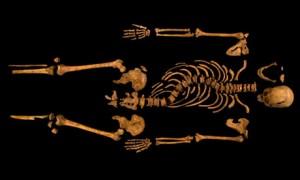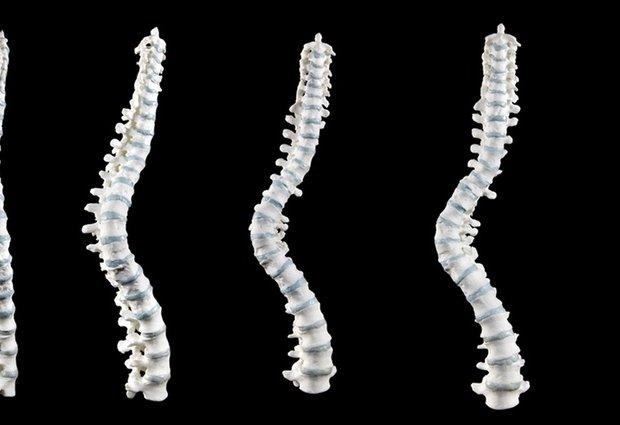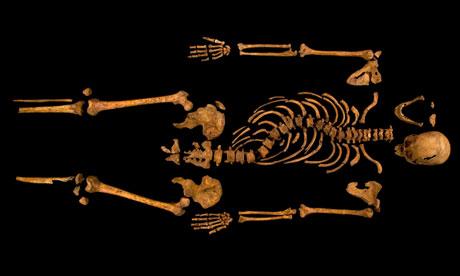Though he was only King of England for two years, Richard III, has managed to capture the imaginations of countless generations since his death in 1485. Shakespeare wrote “Richard III” about the long dead monarch, and movie legends such as Laurence Olivier, Al Pacino and Ian McKellen have portrayed him on the Silver Screen.
In life, Richard III was a slight man, and probably not imposing at all, due to his height. In death, depending on the whims of the times, he has been portrayed as both a villain and a victim of slander. One of the biggest rumors that circulated around Richard III was that he was a hunchback, just like Quasimodo from the Victor Hugo novel.
Like a game of telephone, Shakespeare repeated the rumor. Even Mark Twain kept it going, saying in “A (Burlesque) Autobiography,” “I was born without teeth — and there Richard III had the advantage of me; but I was born without a humpback, likewise, and there I had the advantage of him.”
When Richard’s remains were found in underneath a parking lot in Leicester, England in 2012, imaginations were reignited.
“We wanted to know if Shakespeare’s description was accurate, or an exaggeration to help legitimize the Tudor monarchs on the throne at the time,” said Dr. Piers Mitchell, an anthropologist at the University of Cambridge, who helped examine the remains.
Once DNA tests confirmed that the remains were indeed those of the last king of the House of York, historians and scientists were baffled. The skeleton was hunch-less. Instead, the vertebrae of Richard’s spine lay in a curve. This suggested to scientists at the University of Leicester that Richard might have had scoliosis.
To make sure Richard really had scoliosis and his vertebrae didn’t just decay in a curved shape, researchers at the University of Leicester used a 3D printer to build a polymer model of the king’s spine.
They did this by carrying out computed tomography (CT) scans, and researchers at the Wolfson School of Mechanical & Manufacturing Engineering at Loughborough University in Leicestershire, used these scans to create 3D prints of the vertebrae to understand how Richard III would have stood while alive.
Based on the printed model of Richard’s spine, researchers came to the conclusion that “Richard III would be better described as crook-backed than hunch-backed,” said Mitchell, who also co-authored the report on the team’s findings. Though the 3D-print revealed that the monarch’s scoliosis, a sideways curvature of the spine, was severe—it caused his spine to curve sharply to the right and probably caused him back pain– it was unlikely to have been immediately visible to others.
“His trunk would have been short relative to the length of his limbs, and his right shoulder a little higher than the left. However, a good tailor to adjust his clothing and custom-made armor could have minimized the visual impact of this,” said Mitchell.
Discuss the use of technology, such as that of 3D printing in determining that Richard III had scoliosis, in the discussion thread on 3DPB.com
Subscribe to Our Email Newsletter
Stay up-to-date on all the latest news from the 3D printing industry and receive information and offers from third party vendors.
You May Also Like
Precision at the Microscale: UK Researchers Advance Medical Devices with BMF’s 3D Printing Tech
University of Nottingham researchers are using Boston Micro Fabrication‘s (BMF) 3D printing technology to develop medical devices that improve compatibility with human tissue. Funded by a UK grant, this project...
3D Printing Webinar and Event Roundup: April 21, 2024
It’s another busy week of webinars and events, starting with Hannover Messe in Germany and continuing with Metalcasting Congress, Chinaplas, TechBlick’s Innovation Festival, and more. Stratasys continues its advanced training...
3D Printing Webinar and Event Roundup: March 17, 2024
It’s another busy week of webinars and events, including SALMED 2024 and AM Forum in Berlin. Stratasys continues its in-person training and is offering two webinars, ASTM is holding a...
3D Printed Micro Antenna is 15% Smaller and 6X Lighter
Horizon Microtechnologies has achieved success in creating a high-frequency D-Band horn antenna through micro 3D printing. However, this achievement did not rely solely on 3D printing; it involved a combination...

































